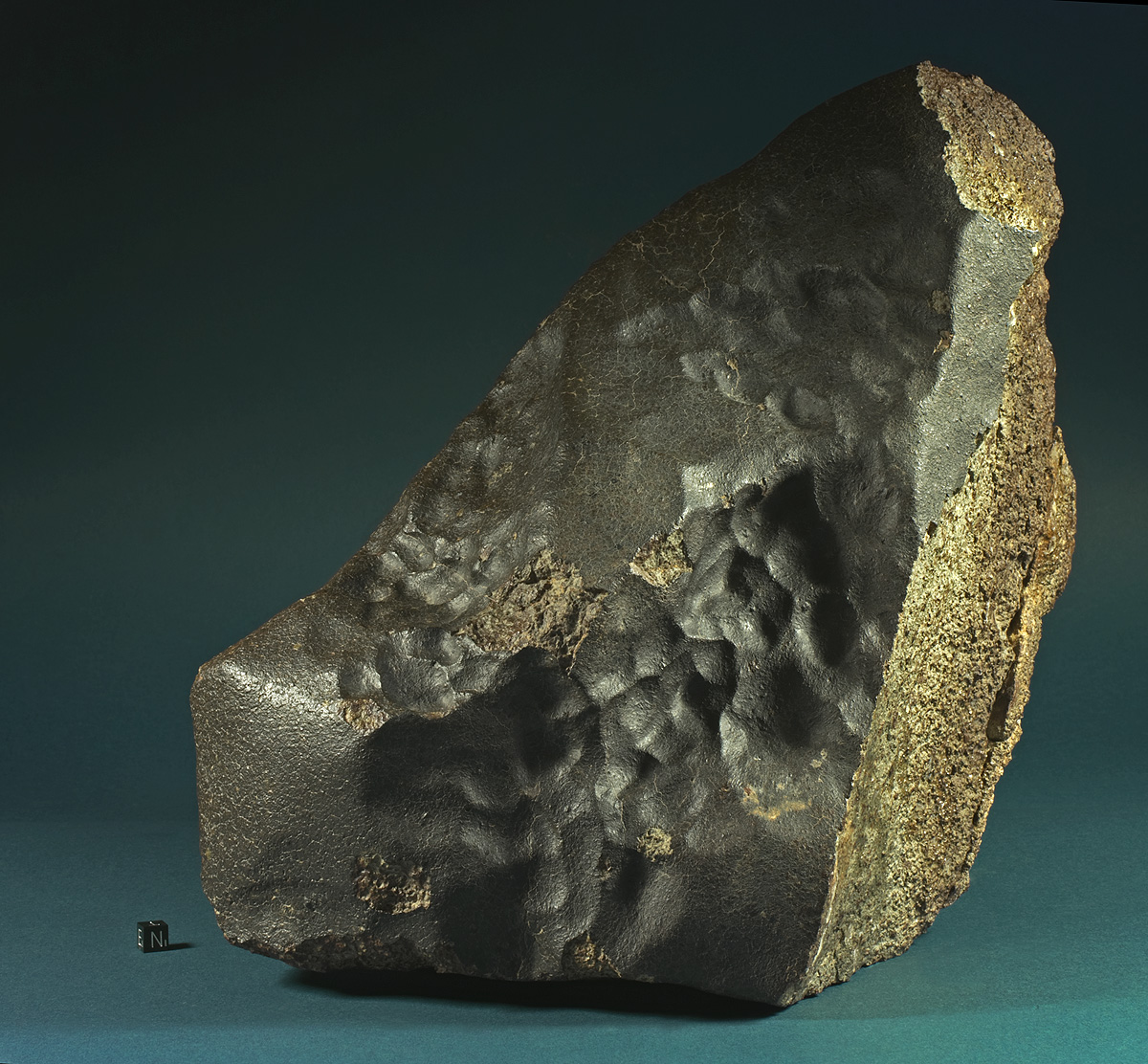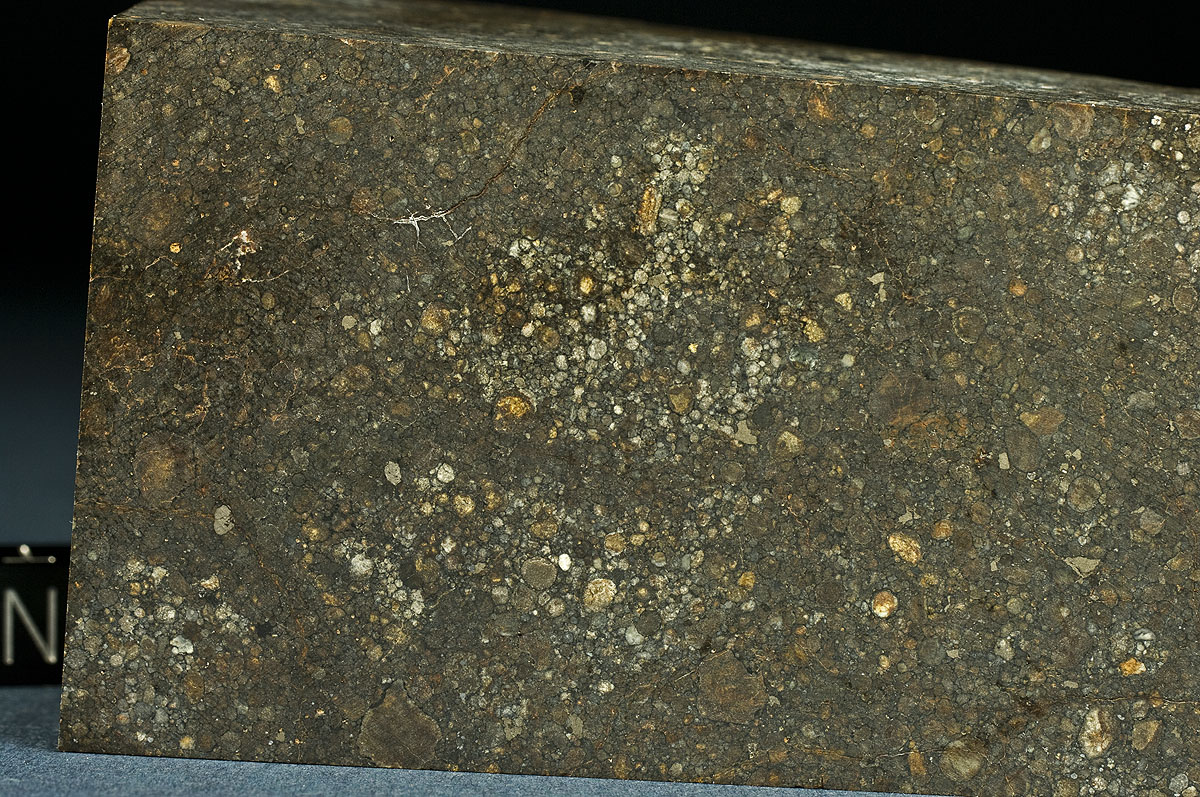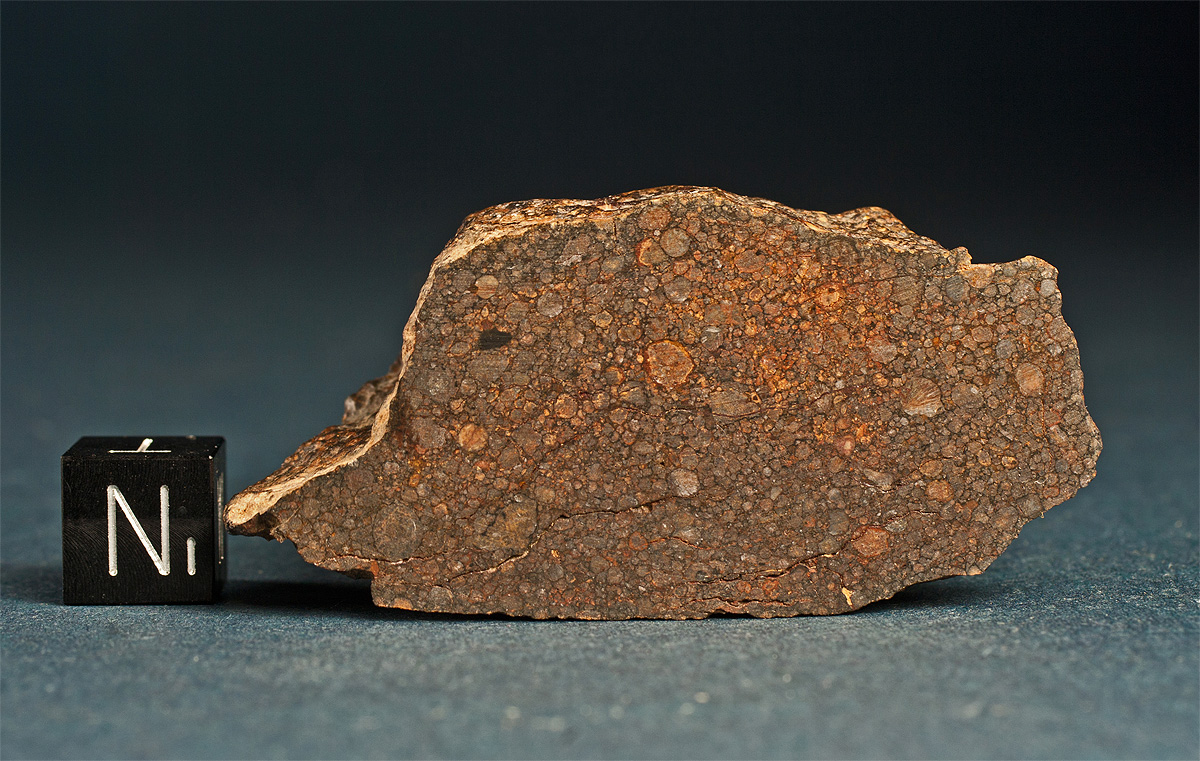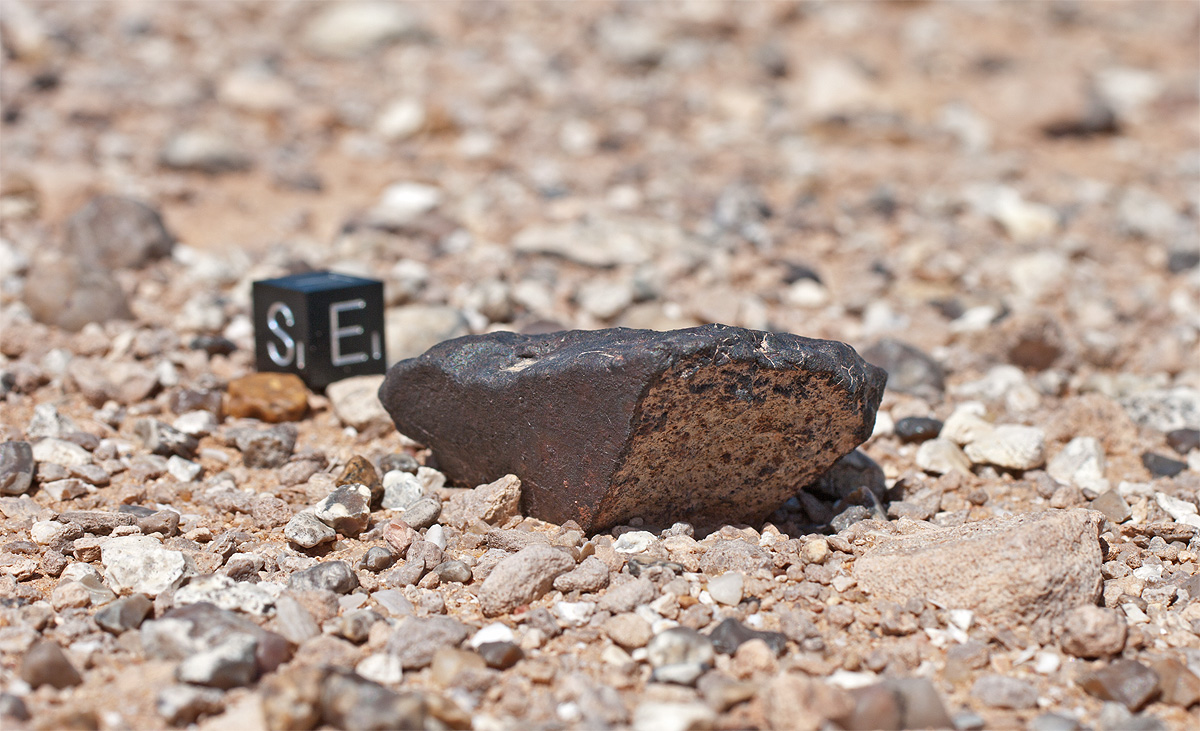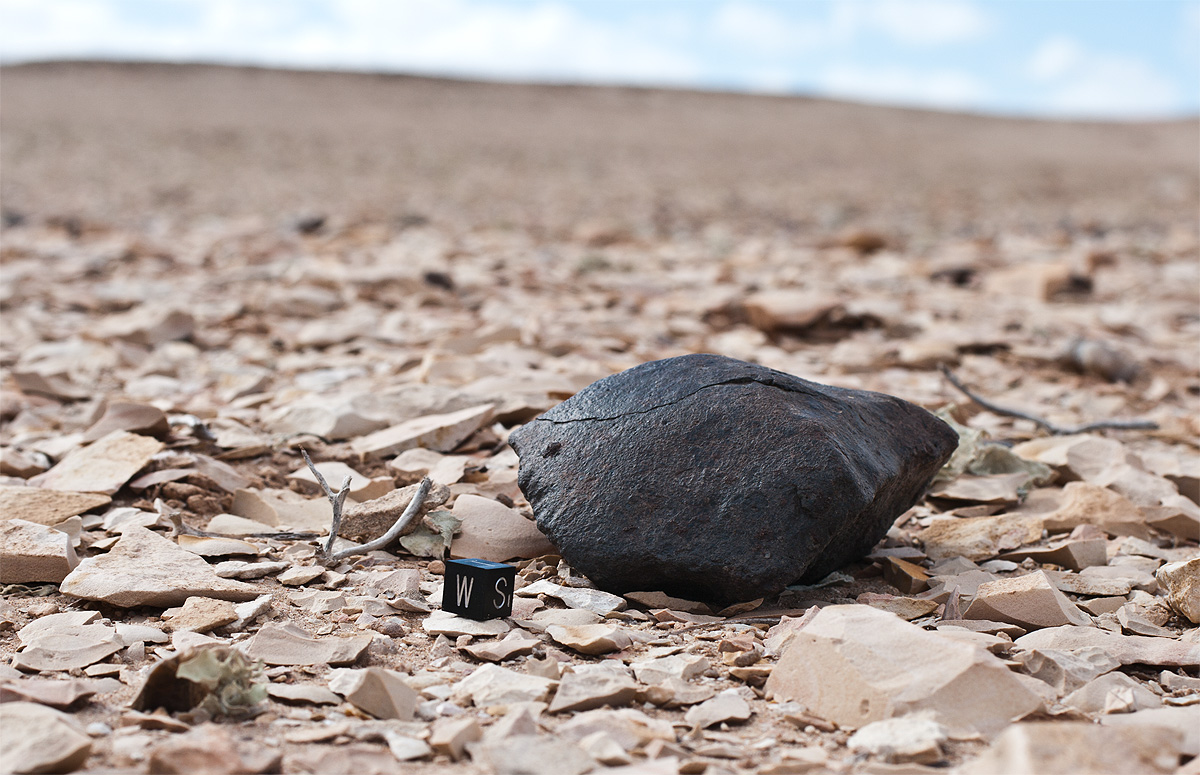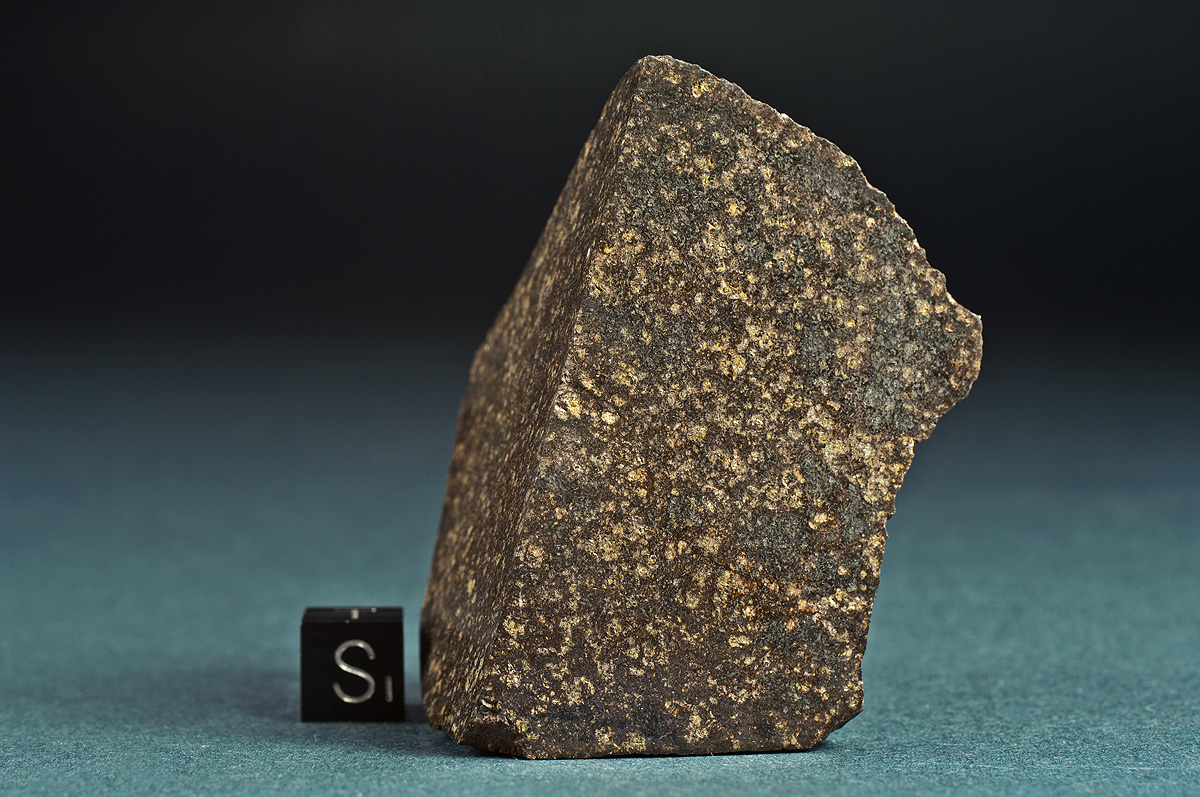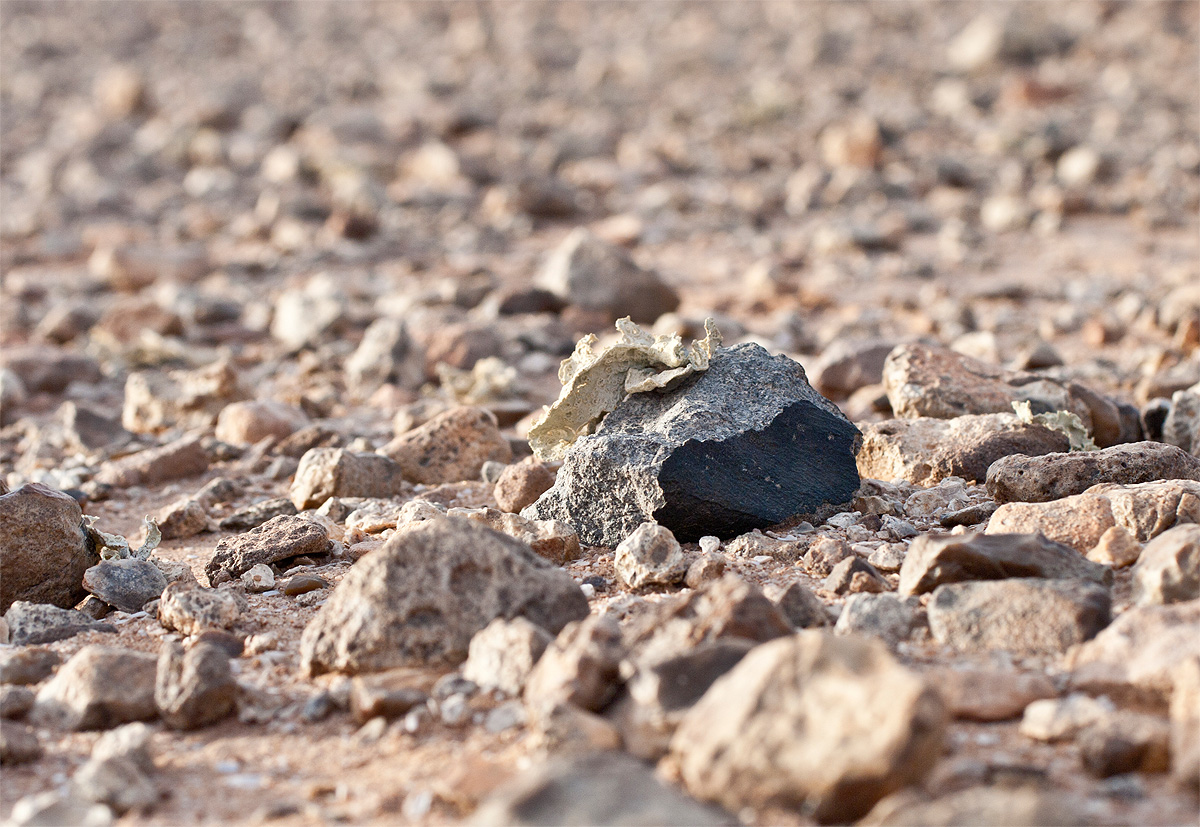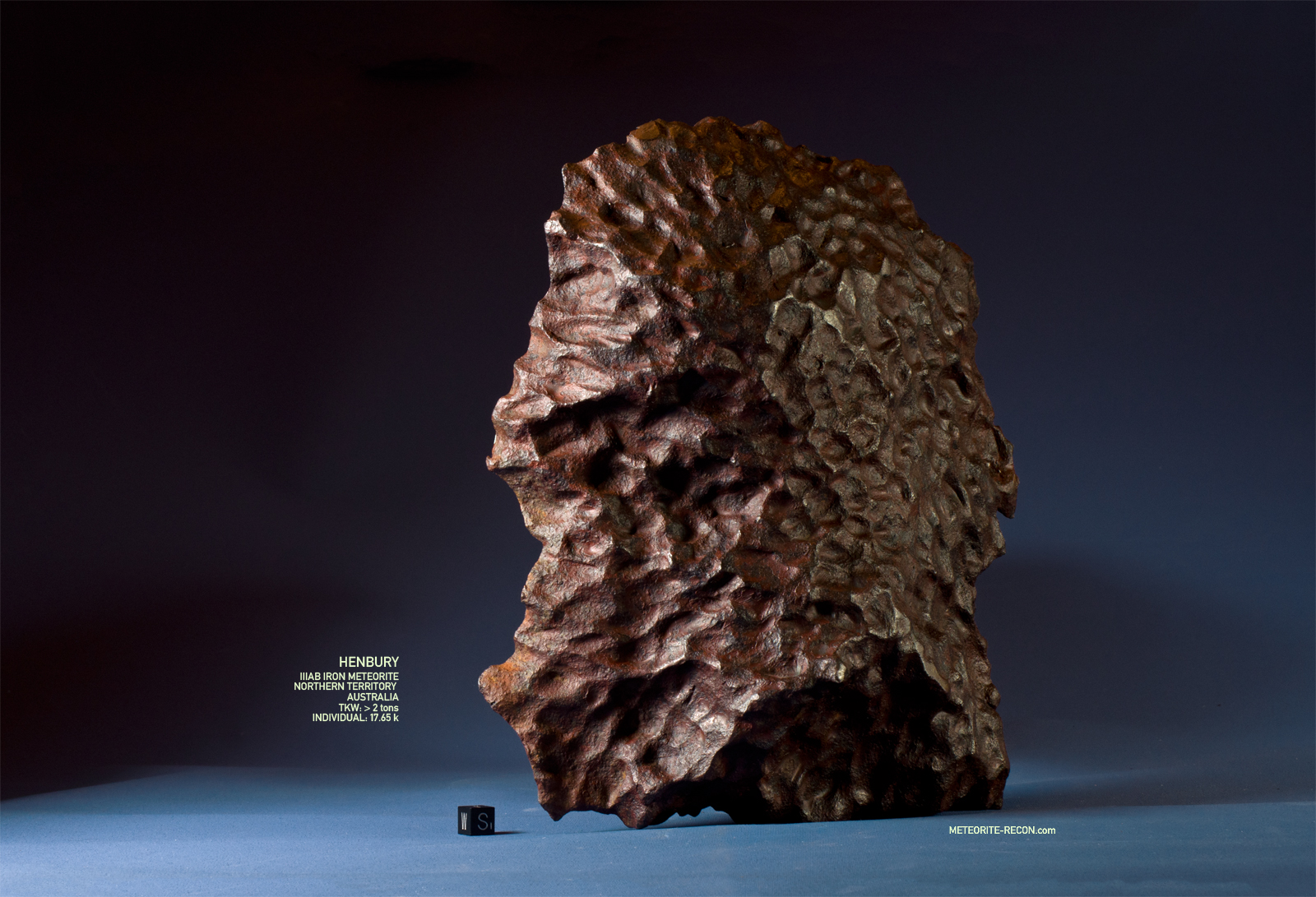Meteorite Recon | Finds
Meteorite search expedtions into continental deserts, meteorite features, collection specimens and photography
Meteorites, Meteorite, meteoritic, iron, meteorites, photos, pictures, in situ, strewnfield, strewn field, impact, fall, finds, Meteorite searching
149
archive,paged,tax-portfolio_category,term-finds,term-149,paged-4,eltd-core-1.0.1,ajax_fade,page_not_loaded,,borderland-ver-1.8, vertical_menu_with_scroll,smooth_scroll,paspartu_enabled,paspartu_on_top_fixed,paspartu_on_bottom_fixed,transparent_content,grid_1300,wpb-js-composer js-comp-ver-6.0.3,vc_responsive,elementor-default,elementor-kit-6471
Stone, chondrite, L5, S1, W1
Morocco or Western Sahara
Find: 2006
TKW: 88 kg
Individual: 33.25 kg
Anvil shaped chondrite with five crusted and one broken surface. Two surfaces show deep and distinct regmaglypts up to 4 cm wide. The fusion crust is thick and well preserved with a webbing of contraction cracks. Flow lines are visible on several portions, particularly in and around the deepest regmaglypts. Not much is known about the find situation other that the strewn field is supposed to be located near the border of Morocco and the Western Sahara. At least three masses (33.25, 10.10 and 4.3 kg respectively) have appeared from this fall since 2006, but it is highly probable that many more have been sold without reference to each other.
Stone, chondrite, L3, S4, W2
Rio Grande do Sul, Brazil
Find: 2003
TKW: 50.4 kg
Endcut: 704.00 g
Cuboid cut section with five cut surfaces and one surface showing weathered fusion rind. Polished cut surfaces show a dense array of well defined chondrules in various sizes and crystallization patterns up to 10 mm in diameter. Large portions of the unequilibrated meteorite are shock blackened. This particular specimen was cut from the 34 kg main mass of the Santa Vitorio do Palmar meteorite, which was previously considered lost and which was rediscovered after the owner passed away in 2009. The pictured thin section slide measures 48 x 28 mm.
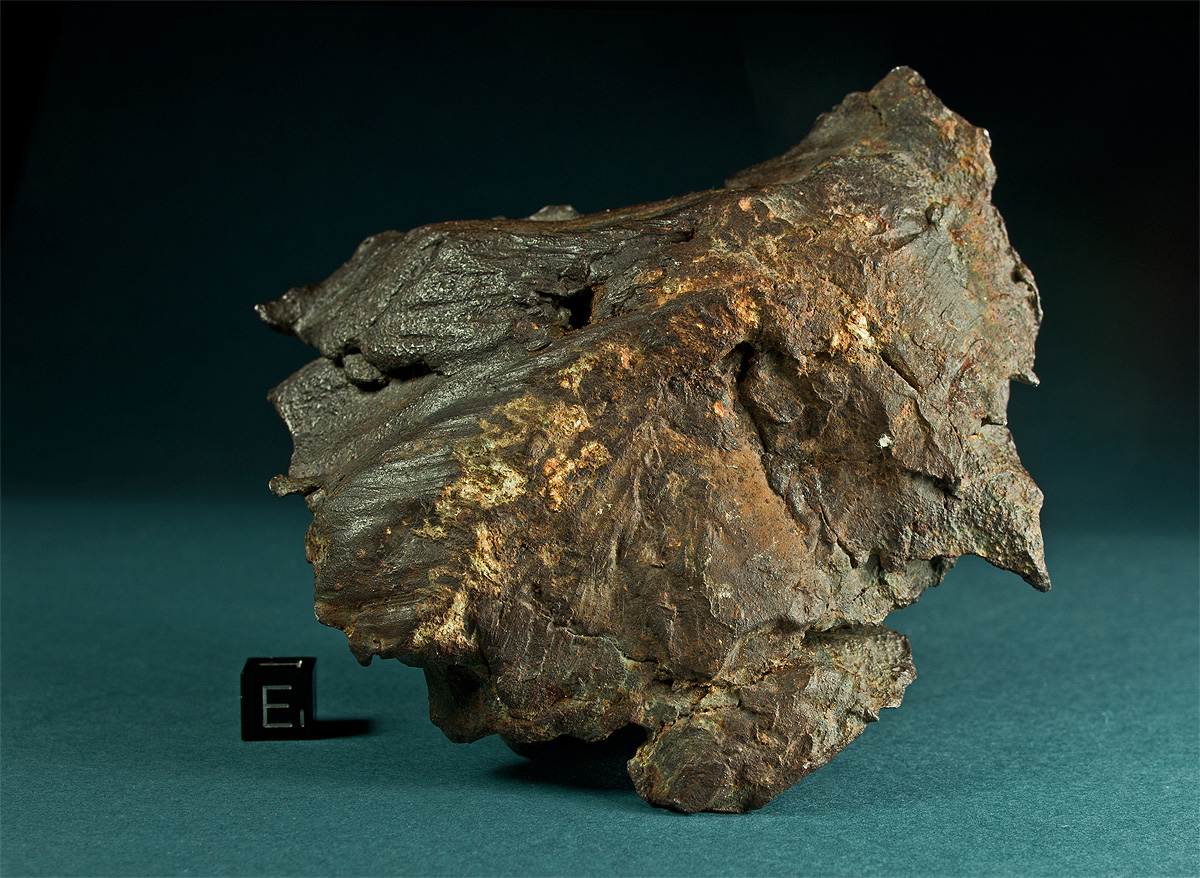
Iron, ungrouped (ataxite)
Al Wadi Al Jadid, East Uweinat Desert, Egypt
Find: 2009
TKW: ~ 1.6 MT
Individual (shrapnel): 1,754 g
Compact shrapnel with one convex surface and jagged edges. The surface exposed in situ displays the characteristic weathering pattern of this location, which is composed of a dense array of submilimeter sized pits, very similar to the exterior texture of iron meteorites recovered from the Atacama desert in Chile. The surface protected in situ shows well conserved shear marks and secondary impact grooves. In patches, a 0.5 – 1.5 mm thick layer of impact glass from the target rock is adhering to the specimen. Under the impact glass, the surface of the meteorite is in pristine state. The Gebel Kamil meteorite shrapnels were found in and around an impact crater with a diameter of 45 meters, which in arial imaging shows a radial ejecta pattern extending up to 450 meters from the center. The crater structure was known since the early 1980s on Soviet topographic maps, where it was listed as a “source of iron”, but not recognized as a meteorite crater. In 2009 it was re-discovered by Italian scientists. The crater formed less than 5,000 years ago. In contrast to current research, and based on the degree of weathering of the meteorites and of the crater itself, we are convinced that the structure is younger than 2,000 years. Only a handful of meteorite impact craters with diameters less than 100 meters are known, thus the Kamil Crater discovery is quite a scientific sensation.
Stone, chondrite, L3, S3, W3
Lourj Al Ghardeg, Sidi A. Laaroussi, Western Sahara
Find: September 17, 2010
TKW: 64.40 g
Endcut 41.50 g
Unequilibrated chondrite with densely packed chondrules and a comparably low matrix ammount. The cut surface which shows a plentiful variation of chondrules opens a window into the aggregation history of protoplanetary material, as it condensed in the presolar cloud 4.56 billion years ago. The pictured fragment was found mid September 2010 from the back of a camel by S. Larabas in the vicinity of Sidi Ahmed Laaroussi, Western Sahara. An additional search did not turn up any further fragments of this peculiar meteorite.
Stone, chondrite, L6, S3, W1
Tifiquirn, Western Sahara
Find: September 27, 2010
TKW: 50.1 g
Half individual: 35.20 g
Prism-shaped and moderately weathered ordinary chondrite. The meteorite features two surfaces with well preserved primary and one with secondary fusion crust. An additional fractured surface shows only traces of fusion. The NiFe aggregates visible on the broken surface developed small rust halos, but no patina has formed on this surface. After cutting of the sample, a megachondrule measuring 6 mm in diameter became visible. The lower photo shows the meteorite in situ. Bou Kra 003 was actually the 5th find in the new dense concentration area Bou Kra which was discovered by the Meteorite Recon team in 2010. Additional finds from the 2012 search campaign in the Bou Kra DCA are currently pending classification.
Stone, chondrite, L5, S1, W2
Saquia al Hamra, Western Sahara
Find: September 25, 2010
TKW: 606 g
Individual w. cut surface: 491.60 g
Oriented shield-shaped mass with single regmaglypts and remnant flow-lines. The meteorite has developed a distinct desert patina as well as few stress cracks due to terrestrial weathering. The matrix as well is darkened as an effect of chemical weathering. Most iron aggregates show progressed oxidation. The upper photo was taken with the meteorite still in its find Position. Note the difference in color due to different lighting and cackground contrast, compared to the studio photo. Bou Kra 002 was actually the 4th find in the new dense concentration area Bou Kra which was discovered by the Meteorite Recon team in 2010.
Stone, achondrite, ureilite, AUR
Morocco (Western Sahara)
Find: 2010
TKW: 603 g
Endcut: 151 g
NWA 6471 was purchased in Morocco (Western Sahara) in October 2010 and subsequently classified by Dr. A. J. Irving. NWA 6471 is a coarse grained aggregate of olivine (exhibiting characteristic reduced, metal-bearing rims) and orthopyroxene. The sample has two polished cut surfaces at right angles to each other, the reverse side shows the original surface and is coated with well preserved fusion crust.
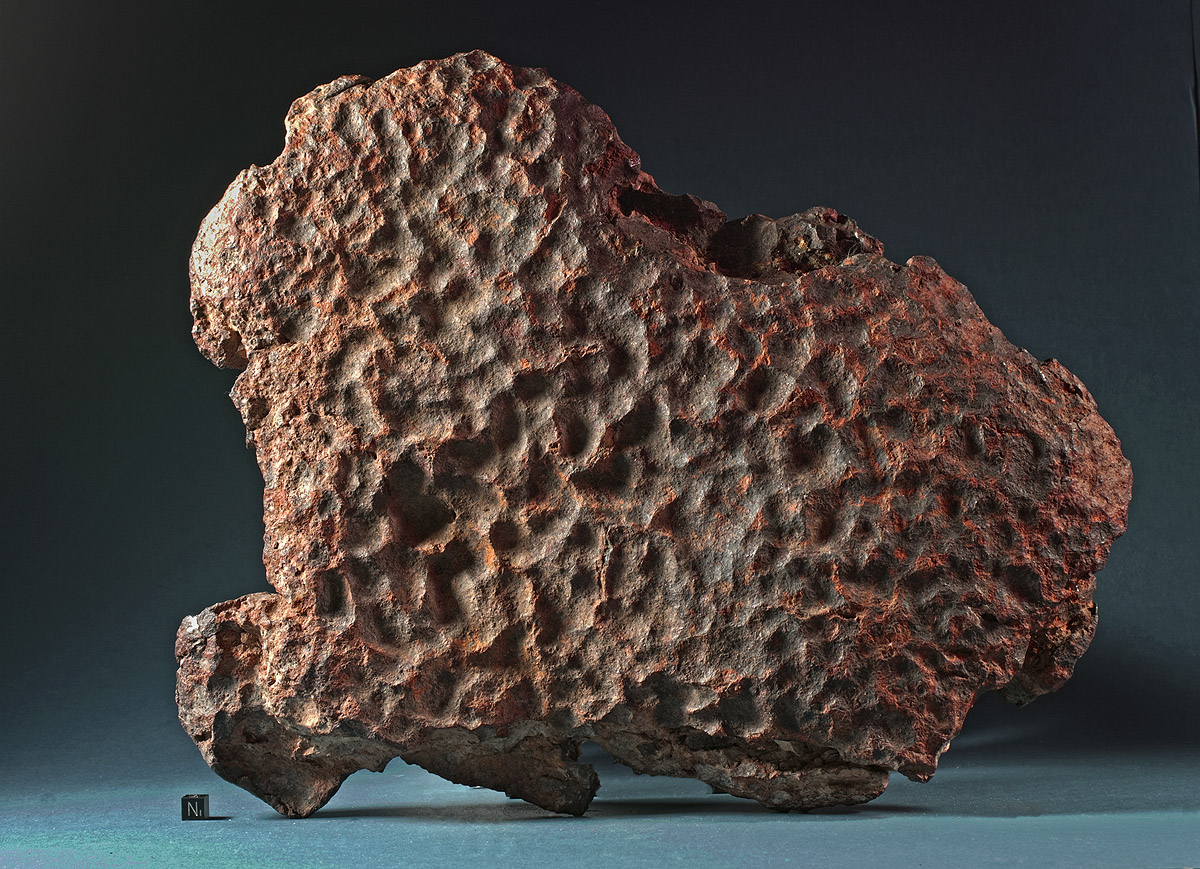
Iron, fine octahedrite, IVA
Southeast of Maltahöhe, Gibeon
Find: 1836 (1985)
TKW: >26 t
Individual: 29.50 kg
This specimen was found by farmer Manfred Gollub on his farm between Maltahöhe and Gibeon in 1985 and shipped to Germany under the name of its find location. With dimensions of 42 x 36 x 6.6 cm the meteorite forms a flat oval shield narrowing towards frayed edges. Due to the thin profile of the shield shape the Maltahöhe mass weighs only 29.96 kg. One slightly concave surface is completely covered with small regmaglypts which show an average extension of 2 cm and an average depth of ~1.2 cm. The regmaglypts are distributed in a random pattern rather than in a radial orientation. Their depth increases towards the centre of the concavity, which is located ~ 8 cm off the geometrical centre and on the expanded end of the shield. Though no fusion crust is preserved the overall erosion on the Maltahöhe mass can be considered very moderate. Regmaglypts are still clearly defined, extension cracks show only superficial caving or smoothing and the usual exaggeration of features common on Gibeon meteorites is absent. Scale cube is 1 cm.
Stone, HED-achondrite, Eucrite monomict
Saquia al Hamra, Western Sahara (Morocco)
Find: September 25, 2010
Finder: S. Buhl, P. Muromov
TKW: 272.7 g
Endcut: 64.4 g
Two large and many small fragments of a fresh eucrite were found during a meteorite search expedition in September 2010 at the northern edge of the G’idat Amwizirat plateau. Both of the larger fragments had a fully grown specimen of the frucitose lichen Ramalina maciformis growing on them. Despite the pristine and unweathered appearance of the meteorite, the plant indicates a terrestrial age of several years. The top photo shows the 130 g fragment prior to cutting, the lower image is an in situ shot of the find location.
Iron, Octahedrite, IIIAB
Northern Territory, Central Australia
Find: 1931 (Alderman)
TKW: > 2 MT
Individual: 17 kg
Sculpted 17 kg individual, found in the 1960s 1.5 miles northeast of the craters by local farmer. The meteorite is shaped like a flat shield, displays distinct orientation and shows deep, elongated regmaglypts on the breastside. In order to preserve its natural appearance (the desert varnish in particular) the iron was left uncleaned, and thus still displays the typical dark red patina of meteorites recovered on the surface of the Henbury crater field.




